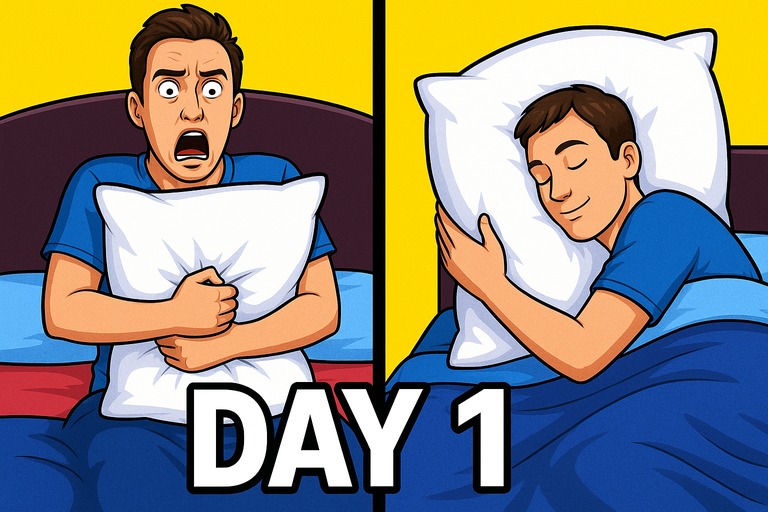Why Sleeping on Your Back Might Be the Worst Habit for Your Snoring (And When It’s Actually Helpful)
Are you unknowingly sabotaging your sleep by sleeping on your back? It might sound surprising, but for many people, this common sleep position could be the culprit behind restless nights, loud snoring, and even dangerous sleep apnea episodes. As highlighted in a recent New York Post article, sleeping on your back is often the unhealthiest position for your respiratory health during sleep — yet there’s an unexpected exception where it actually becomes the best choice. Curious? Let’s dive into the data and science behind sleep positions and explore strategic ways to tackle snoring effectively.
The Science Behind Sleep Positions and Snoring
Snoring is caused by the vibration of relaxed tissues in your airway, which partially blocks airflow. What many don’t realize is your sleeping position dramatically influences how much your airway is obstructed. Sleeping on your back allows gravity to pull your tongue and soft tissues backward, which narrows the airway and increases the chances of loud snoring or even obstructive sleep apnea (OSA).
Data from multiple sleep studies show that approximately 75% of snoring and apnea episodes occur during back sleeping. On the other hand, side sleeping tends to keep airways more open, reducing the severity of snoring for many individuals.
So why do some experts say there’s an exception when sleeping on your back might actually be beneficial? It all comes down to specific medical conditions and individual anatomy. For example, in people with certain spine or joint issues, back sleeping with proper support can improve spinal alignment and reduce discomfort, which indirectly improves sleep quality.
Why Side Sleeping Is Still King for Most Snorers
If you’re battling snoring or sleep apnea, side sleeping typically remains the best strategy. Here’s why:
- Less airway obstruction: Gravity doesn’t pull your tongue backward as it does on your back.
- Reduced sleep apnea events: Side sleeping can reduce apnea episodes by up to 60% in some patients.
- Improved oxygen saturation: Keeping airways open helps maintain steady oxygen levels throughout the night.
But, let’s be honest — switching your sleep position isn’t always easy, especially if you’ve spent years on your back. This is where combining positional therapy with proven anti-snoring devices comes into play.
How Anti-Snoring Mouthpieces Can Complement Sleep Position Changes
If adjusting your sleep position isn’t enough or feels uncomfortable, consider using a scientifically designed oral appliance. The Snorple Anti-Snoring Mouthpiece is an innovative solution combining the benefits of mandibular advancement devices (MADs) and tongue stabilizing devices (TSDs). It works by gently repositioning your jaw forward and stabilizing your tongue to keep your airway open — regardless of your sleep position.
What makes Snorple stand out?
- Customizable fit: The boil-and-bite, microwave-friendly material lets you mold the mouthpiece comfortably to your unique dental structure.
- Adjustable jaw advancement: You can fine-tune the device to balance comfort with maximum airway opening.
- Hypoallergenic materials: Safe for sensitive users, made from latex-free, skin-friendly components.
These features are backed by over 100,000 satisfied customers who have experienced significant snoring reduction and better sleep quality. Plus, with a 30-day money-back guarantee, it’s a low-risk way to enhance your nighttime breathing.
Practical Tips to Improve Sleep Position and Reduce Snoring Tonight
Don’t wait for snoring to control your nights. Here are actionable steps to start improving tonight:
- Train yourself to sleep on your side: Use body pillows or a tennis ball sewn into the back of your pajamas to discourage rolling onto your back.
- Elevate your head: Raising the head of your bed or using a wedge pillow can reduce airway collapse.
- Consider an oral device: Explore customizable mouthpieces like Snorple for immediate support.
- Maintain healthy weight and avoid alcohol before bed: Both impact airway relaxation and snoring frequency.
The Bottom Line: Understanding When Back Sleeping is Harmful and When It’s Not
Yes, sleeping on your back is a major contributor to snoring and sleep apnea for most people — but context matters. If you have specific orthopedic needs, consult a healthcare professional to find your ideal sleep position. For the majority struggling with snoring, however, side sleeping combined with advanced oral appliances offers a practical, data-driven path to quieter, more restful nights.
Before you make any drastic changes, consider reading the full article on why sleeping on your back is often unhealthy — it brings expert insights that could transform your understanding of sleep health.
If you’re ready to take control tonight, explore how a tailored anti-snoring mouthpiece can make all the difference by checking out innovative options available at Snorple’s official site.
What’s your sleep position? Have you noticed a difference in snoring or sleep quality when you change it? Let’s start a conversation below!
